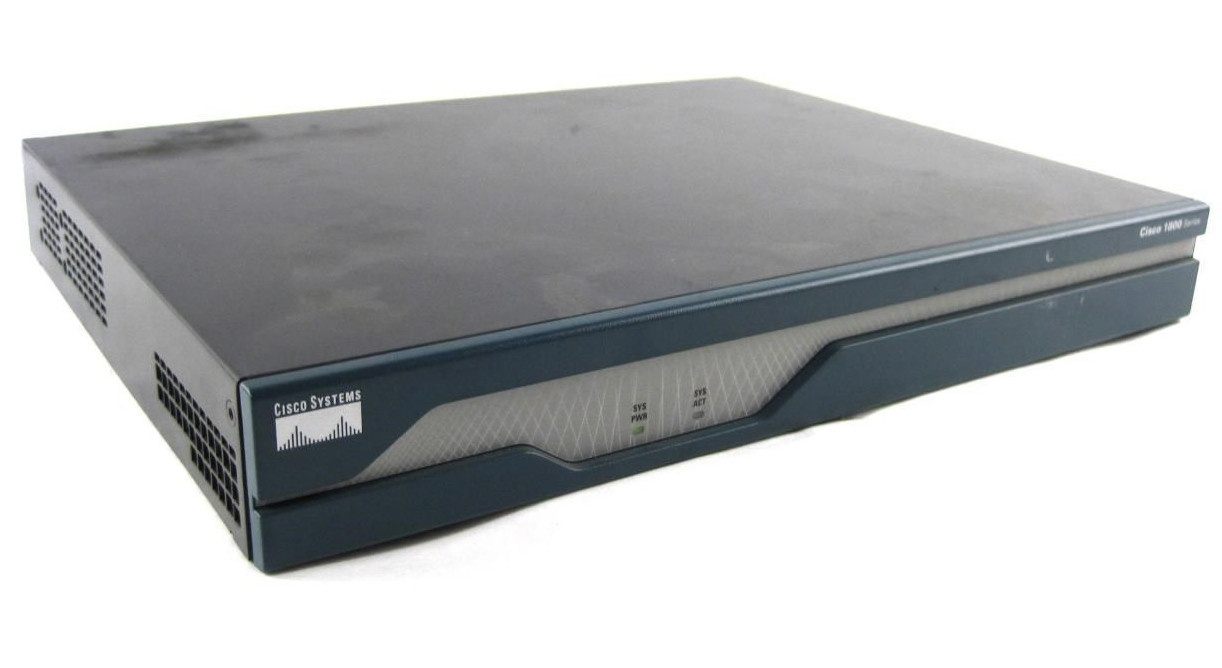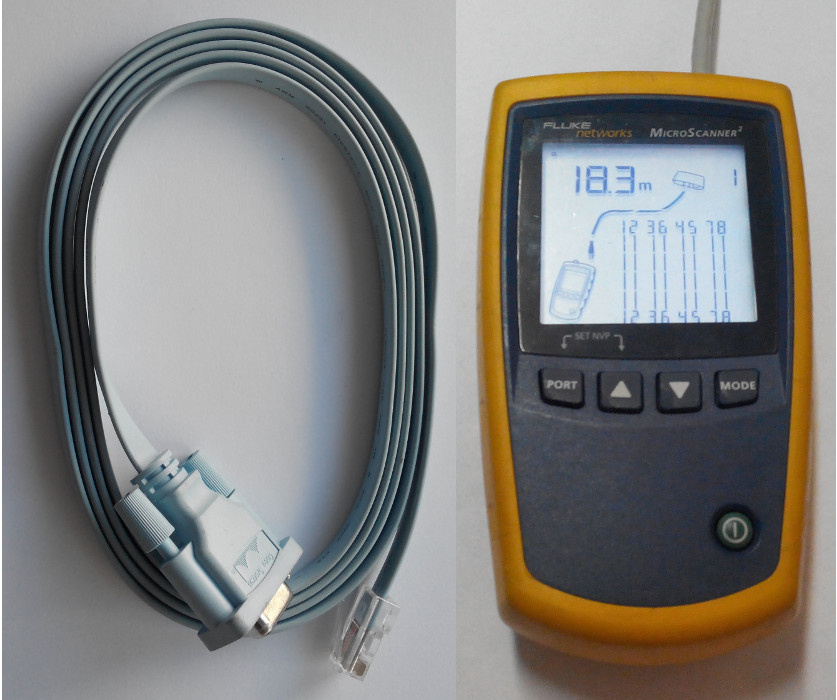Returning a Cisco router with a non-working CF or mini-flash card
Somehow electricians needed to carry out planned work with shutting down the equipment of the organization. Under the plan for the night, the employees turn off the equipment, the electricians work at night, and in the morning the employees turn on everything and rejoice. In the evening, turned off the server, network equipment and UPS. In the morning everything was turned on and began to work quietly until exactly the moment when they did not understand that the Internet connection had not risen, and therefore the organization’s website was not accessible from the outside.

(Cisco 1800 series)
Check the availability of the router, pinging. The router is unavailable. We run to look at it in the server and see that the status LED is in order. So you need to connect to the console.
I didn’t want to unscrew the router from the server cabinet, so we threw 15-20 meters of twisted pair from the server to our office as an extension for the console wire.
')
Connect and see the
At first we tried to upload the firmware via xmodem , but we were not impressed with the speeds so much that we immediately switched to downloading the firmware via tftp. The tftpd and the router firmware file were installed on the computer on the network (in this example, let the address of this computer be 192.168.1.2). The following commands were issued on the router via the console:
(I indicated the firmware of our test router in the name of the firmware file, since I checked everything on it)
And we give theor some irresponsible types have taken it , because it allows us to load the firmware file right into the router’s memory bypassing the memory card).
If the startup configuration file (startup-config) was on the same memory card, then the next step is to fill in the configuration we have saved via tftp. Or configure the router again from the console.
(just in case, I note that Router # is already an IOS invitation, since the system should have booted)
We are prompted to specify the tftp host address, the source file name, and confirm the destination file name.
The router worked as it should, we disconnected the improvised console patchcord and went slowly to look for a suitable memory card.

(Cisco 1800 series)
Why remembered
I remembered this incident due to the fact that a similar situation occurred the other day with the Cisco 871-K9 test router.

(in this model cisco mini-flash memory module on the bottom left)

(in this model cisco mini-flash memory module on the bottom left)
Check the availability of the router, pinging. The router is unavailable. We run to look at it in the server and see that the status LED is in order. So you need to connect to the console.
I didn’t want to unscrew the router from the server cabinet, so we threw 15-20 meters of twisted pair from the server to our office as an extension for the console wire.
')
Check
Take a couple of patchcords, console cable cisco and connect all this stuff with a pair of adapters.

(length of two patchcords with an adapter ~ 18.3m)
Works.

(length of two patchcords with an adapter ~ 18.3m)
Works.
Connect and see the
rommon 1 > invitation rommon 1 > So the router could not find or download the firmware. We were not ready for this and climbed to look for a suitable one, but a copy of the router configuration was found.At first we tried to upload the firmware via xmodem , but we were not impressed with the speeds so much that we immediately switched to downloading the firmware via tftp. The tftpd and the router firmware file were installed on the computer on the network (in this example, let the address of this computer be 192.168.1.2). The following commands were issued on the router via the console:
IP_ADDRESS=192.168.1.200
IP_SUBNET_MASK=255.255.255.0
DEFAULT_GATEWAY=192.168.1.1
TFTP_SERVER=192.168.1.2
TFTP_FILE=c870-advipservicesk9-mz.124-24.T8.bin
(I indicated the firmware of our test router in the name of the firmware file, since I checked everything on it)
And we give the
tftpdnld -r command (the -r key is important if the memory card does not work If the startup configuration file (startup-config) was on the same memory card, then the next step is to fill in the configuration we have saved via tftp. Or configure the router again from the console.
Router#copy tftp: running-config(just in case, I note that Router # is already an IOS invitation, since the system should have booted)
We are prompted to specify the tftp host address, the source file name, and confirm the destination file name.
The router worked as it should, we disconnected the improvised console patchcord and went slowly to look for a suitable memory card.
Source: https://habr.com/ru/post/335648/
All Articles